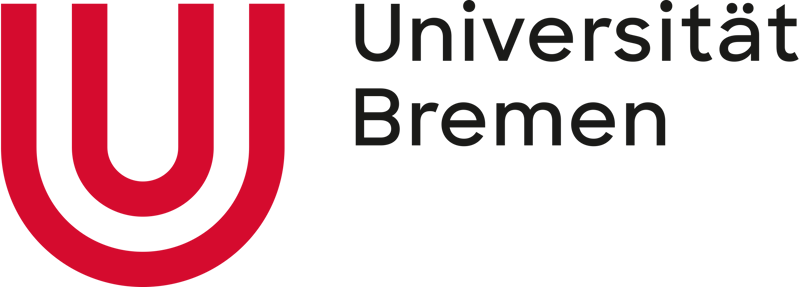Becoming a parent implies a rapid transition with long term consequences for one’s life course. Turbulence - levels of periodic instabilities - in the labour market attachment in the transition to parenthood can have decisive effects on long term gender inequalities in wage and employment levels. This is especially so for mothers across countries and individual conditions.
Becoming a parent, the gender (wage) gap, and the risk of life long inequalities
The labour force participation of women in Europe has been increasing over the last few decades, while it remained relatively stable for men. The structural shift of most European economies towards service and knowledge economies, rising employment in the public sector, and ever widespread efforts to offer work-family reconciliation policies are key drivers of this development. Despite this, the gender gap in employment and wages persists. In industrialised and post industrial economies, the transition to parenthood has been identified as the main driver of these inequalities between men and women. The differences accrue especially in the first two years after childbirth, and tend to remain sustained throughout working life. Apart from cumulative labour market disadvantages and potential economic dependence on the partner, this unequal juncture increases the risk for life long inequalities and vulnerabilities, such as old age poverty.
But not all mothers’ working lives are impacted in the same way. Already existing socio-economic inequalities between mothers at the time of birth might exacerbate the effect of childbirth on employment. The type and flexibility of employment, material resources, personal networks, together with the policy and norm context are decisive factors influencing how this period plays out, and how vulnerable the employment prospects of the mother really are.
Countries differ in how they structure the period around childbirth through the provision of different policy instruments. The design of leave policy and the availability of childcare are especially important. Shorter leaves, for example in the Nordic countries, tend to incentivise a quick return to employment and tend to narrow gender inequalities, while longer leaves, such as in some Central and Eastern European countries tend to incentivise the primary caregiver, mostly the mother, to remain at home. However, short leaves coupled with expensive or otherwise inaccessible childcare entail a so called early childcare gap, which is for example rather pronounced in Southern European countries. Generally, this gap implies that care work by the mother is not remunerated, nor is it possible to outsource it. It can either be filled with informal care provision through e.g., grandparents, purchasing care on the free market, or by the mother herself. Mothers with fewer resources living in less favourable policy and norm contexts generally are more vulnerable than their resourceful counterparts in generous welfare states.
Typical patterns in mothers’ employment around childbirth
In a recent paper, Tom Emery, Alžběta Bartova, and I generate a typology of employment trajectories around births. The central assumption is that the early childcare gaps become visible when examining labour market trajectories of mothers around childbirth through what we call periodic turbulence. By that we mean irregularities or apparent instabilities in the labour market attachment of mothers around this period, such as quickly switching back and forth between different intensities of employment and non-employment in the period after birth. While turbulence may be a negative phenomenon indicating vulnerable positions in the labour market, it might also be an indicator of agency and control over how exactly someone might want to navigate this period.
We use month-to-month micro-level longitudinal data from the EU-SILC, a large European Survey, to explore how turbulence in the period around birth is structured in different countries. We construct labour market trajectories including leave policy entitlements spanning 36 months around childbirth. During this period the labour market position of mothers is most vulnerable since paid leave usually ends a couple of months after birth, while childcare only becomes widely accessible from age 2 to 3 of the child. To estimate the protective effect of the welfare state during this period on individual trajectories, we therefore pair past labour market information with information on individual leave policy entitlements.
We identified nine typical patterns in mothers' employment trajectories, which can be grouped into three categories. The first category includes three stable patterns: continuous full-time employment makes up around 31% of all mothers, continuous part-time employment around 5%, and continuous non-employment around 23%. Mothers employed before birth qualify for paid leave benefits, while non-employed mothers do not. The second category comprises two patterns characterised by extended leave periods: one for previously employed mothers (5%) and another for previously unemployed mothers (3%), both with leave benefits lasting approximately 2 years. In total, about two-thirds of mothers experience stable transitions during the childbirth period.
The third group contains trajectories that are marked by significant turbulence in labour market activity around the moment of childbirth, with varying implications. Generally, unpredictability of labour market activity is concentrated in the first year after childbirth. The starting and end points, however, are different ones: in one identified pattern, which represents around 13% of all mothers, the transition from full-time employment before birth to part-time employment occurs via a turbulent year in between. In another pattern, mothers transition from full-time employment into unemployment, after experiencing several spells of different intensities of employment after childbirth (7%). The next pattern is exemplified by a stalled return to full-time employment, with a turbulent period in between (7%). The final pattern in this group stands out because mothers seem to reduce their working intensity already before childbirth, to then slowly transition into non-employment after generous leave (6%). The turbulent period here is somewhat elongated and shifted to the left.
Periodic turbulence is unevenly distributed among social strata and country contexts
We find that the prevalence of these patterns, and hence turbulence and potential vulnerability differs widely between countries and social strata. And although mothers of different social strata are affected in different ways depending on the country of residence, several general trends are noteworthy.
Countries with relatively short and well remunerated leaves see higher levels and less segregation of employment throughout the observed period (Iceland, Portugal, Romania, Lithuania, Croatia, Norway and Denmark). The heterogeneity of likely trajectories differs widely between countries as well, with countries such as Spain, Italy, Greece, Belgium, Bulgaria, Austria and Latvia exhibiting especially segregated employment patterns. Estonia, Hungary, Czechia and Slovakia stand out due to their long leaves with universal eligibility.
As a rule, it seems to hold that the level of education is associated with the likelihood and type of employment before birth, and therefore also with eligibilities for remuneration through parenting leave benefits, and the possibilities of returning to employment with more flexible working arrangements. The presence of previous children has a negative effect on the likelihood of employment before birth across social strata. Generally, lower educated mothers are less likely to be employed throughout, and less likely to be remunerated for care work after childbirth via leave policy. If they are employed, however, a return into part-time employment is less likely, which indicates occupational segregation, as certain professions might not allow for the flexibility required during this time. The four Eastern European countries with notably long leaves are an exception: leaves come with attached benefits regardless of whether mothers worked before birth or not. Higher educated mothers also are more likely to transition into part-time, and lower educated mothers into non-employment, suggesting that some occupations are more flexible than others.
Family policies interact with and compound individual level inequalities
In conclusion, this study demonstrates that welfare state services function as crucial individual-level resources that shape mothers' employment trajectories around childbirth. However, these resources interact with within-couple dynamics, labour market attachment and employment conditions, together with the norm context. They are hence not uniformly available to the same extent across time and for all social groups. This can create gaps in the period after childbirth that can exacerbate existing inequalities. How different welfare states structure the period around childbirth through their policies implicitly promotes certain family and gender arrangements (and sanctions others), leading to varying outcomes across European countries.
To understand how inequalities emerge and compound around this period in mothers’ lives, it is important for policy makers to pay attention to detailed but general activity patterns around childbirth. Applying static measurements obfuscates potential long term ramifications of periodic turbulence. While efforts to foster the integration of mothers into the labour market are being made across Europe, one key step to decrease gender inequalities for all social strata in and outside the home is closing the early childcare gap.
This interview is alsopublished in German at sozialpolitikblog: 'Turbulenzen in Erwerbsverläufen während der kritischen Phase des Übergangs zur Elternschaft'
Header photo: Adobe Stock | uv group








